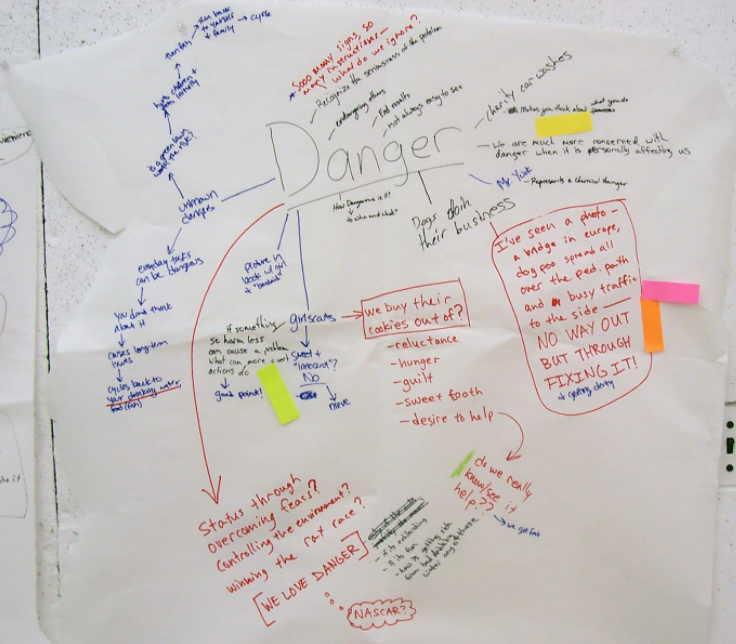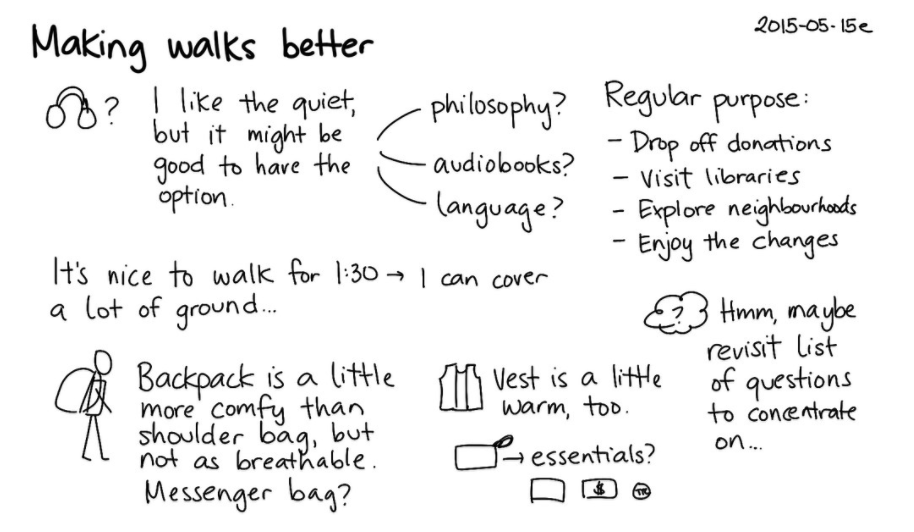Prewriting: Organizing and Outlining
27 Prewriting Step One: Gathering Ideas
How do you start on a writing project? There isn’t just one right way to begin. Some people dive right in, writing in complete sentences and paragraphs, while others start with some form of brainstorming or freewriting. Others choose a strategy based on the writing task and how familiar they are with the topic. A writing instructor may want you to try out different methods so that you can figure out what works best for you. You may want to have more than one method in case you get stuck and need to break out of a writing block.
Here are some common strategies for getting started (sometimes called invention strategies). They all have some common tips:
- Write down all of your ideas; don’t eliminate anything until you are done brainstorming.
- Don’t bother with editing at this stage—it can be messy.
- Work as quickly as you can.
- If you get stuck, stop and review your work or get someone else’s input.
- Each method can work as a solo technique or with others.
Brainstorming
A brainstorm is usually done in a group setting, and you may do this in your class as part of the pre-writing lesson. The idea is that all the brains in the class “storm” together with ideas. Someone will be responsible for capturing these ideas—on the whiteboard, on a piece of paper, or another method.
You can brainstorm on your own by throwing your ideas out of your mind and onto paper as quickly as you can.
Clustering
A cluster is a method of brainstorming that allows you to draw connections between ideas. This technique is also called a tree diagram, a map, a spider diagram, and probably many other terms.
- To make a cluster, start with a big concept. Write this in the centre of a page or screen and circle it.
- Think of ideas that connect to the big concept. Write these around the big concept and draw connecting lines to the big concept.
- As you think of ideas that relate to any of the others, create more connections by writing those ideas around the one idea that connects them and draw connecting lines.
Here’s an example:

Notice that you can use colour, larger type, etc., to create organization and emphasis. Remember that your cluster doesn’t need to look like anyone else’s. Create the cluster in the way that makes the most sense to you. Once you have finished the cluster, you can use another technique to generate actual text.
Listing
Listing is making a list of ideas. Here are two kinds of lists you might use.
Brainstorm list: Simply make a list of all the ideas related to your topic. Do not censor your ideas; write everything down, knowing you can cross some off later.
Here’s an example:

What I know/don’t know lists: If you know that your topic will require research, you can make two lists. The first will be a list of what you already know about your topic; the second will be a list of what you don’t know and will have to research.
Freewriting
Freewriting is a technique that actually generates text, some of which you may eventually use in your final draft. The tips are similar to brainstorming and clustering:
- Write as much as you can, as quickly as you can.
- Don’t edit or cross anything out. (Note: if you must edit as you go, just write the correction and keep moving along. Don’t go for the perfect word, just get the idea on the page.)
- Keep your pen, pencil, or fingers on the keyboard moving.
- You don’t need to stay on topic or write in any order. Feel free to follow tangents.
- If you get stuck, write a repeating phrase until your brain gets tired and gives you something else to write. (Variation: I like to complain at this point, so I write about the fact that I’m stuck, I really hate having to do this, why isn’t it lunch-time already, etc.)
- Freewriting can be used just to get your mind working so that you can write an actual draft. In this case, you can write about whatever you want. Freewriting to generate ideas usually works best when you start with a prompt—an idea or question that gets you started. An example of a writing prompt might be “What do I already know about this topic?” Or “What is the first idea I have about my topic?” If you started with a list or an outline, you can freewrite about each item.
Looping
Looping is a technique built on freewriting. It can help you move within a topic to get all related ideas into writing.
- To begin, start with a freewrite on a topic. Set a timer and write for 5-15 minutes (whatever you think will be enough time to get going but not so much that you will want to stop).
- When the time period ends, read over what you’ve written and circle anything that needs to be expanded on or that branches into new ideas. Select one of these for your next loop.
- Freewrite again for another time period, using the idea you selected from the first freewrite.
- Repeat until you feel you have covered the topic or you are out of time.
Asking Questions
To stimulate ideas, you can ask questions that help you generate content. Use some of the examples below or come up with your own.
- Problem/solution: What is the problem that your writing is trying to solve? Who or what is part of the problem? What solutions can you think of? How would each solution be accomplished?
- Cause/effect: What is the reason behind your topic? Why is it an issue? Conversely, what is the effect of your topic? Who will be affected by it?
- The set of journalist’s questions is probably the most familiar for writers. Using the journalist’s questions, sometimes called the five W’s (plus How), is an effective way to write about the basic information about your topic. Here are the questions:
- Who: Who is doing this? Who is affected?
- What: What is happening? What will happen? What should happen?
- Where: Where is it happening?
- When: When is it happening?
- Why: Why is this happening?
- How: How is it happening?
Discussing
Discussion can be a great way to get your ideas flowing. In a group setting, I tell my students to turn to each other and tell whatever they know about the given topic. Even if they think they know nothing, they can generate ideas by discussion.
Journals or “Minute Papers”
Many people keep journals in their daily lives, and you might find that you have already put thought into a topic you can choose from for your assignment.
Or, you may have already made a reading journal or a “minute paper” from the tips in the Reading chapter, “Reflecting on What You Read.” Have a look at one of them now and see if you have generated any ideas that could be used in your assignment.
Dialectic Note-taking
These notes are a great place to gather ideas for your assignment. If you were following the instructions carefully, you already have quotes or paraphrases ready to go into your assignment. See the instructions here: “Dialectic Note-takeing.”
Text Attributions
- This chapter was adapted from “Strategies for Getting Started” in The Word on College Reading and Writing by Carol Burnell, Jaime Wood, Monique Babin, Susan Pesznecker, and Nicole Rosevear, which is licensed under a CC BY-NC 4.0 Licence. Adapted by Allison Kilgannon.
Media Attributions
- “Danger” by Parhamr is licensed under CC BY-NC-ND 2.0 Licence.
- “Making Walks Better” by Sacha Chua is licensed under CC BY-NC-ND 2.0 Licence.

